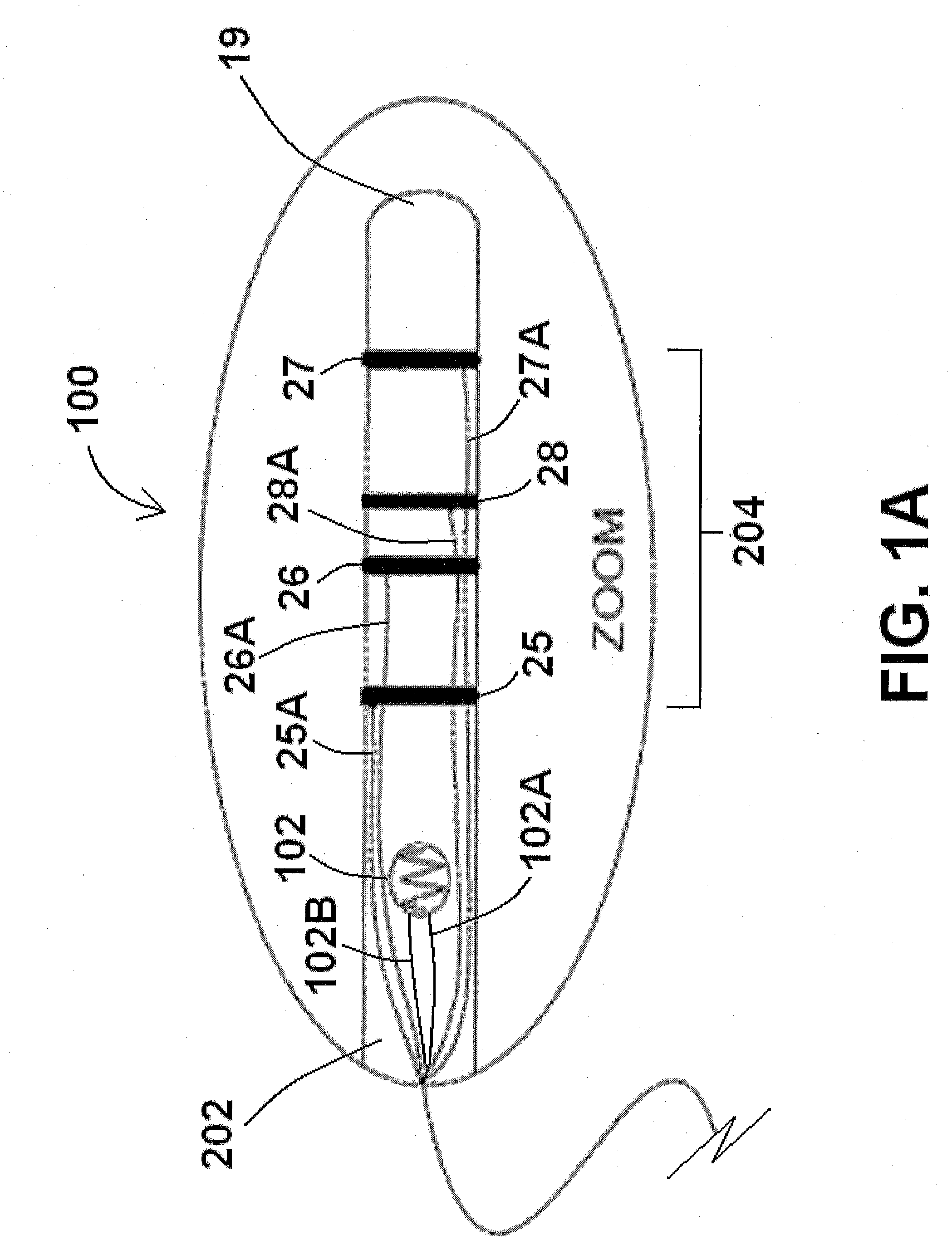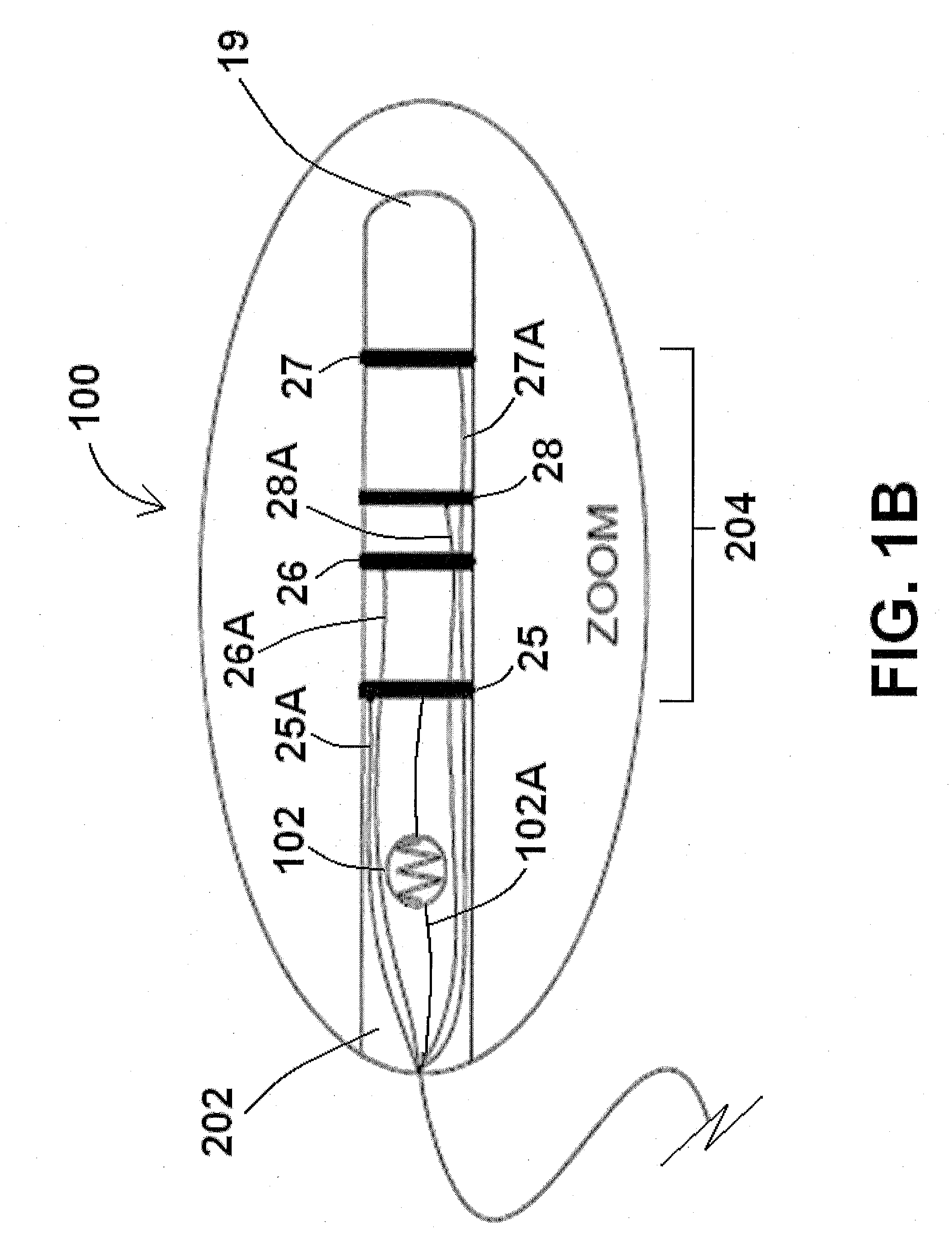Devices, systems, and methods for measuring parallel tissue conductance, luminal cross-sectional areas, fluid velocity, and/or determining plaque vulnerability using temperature
a technology of parallel tissue conductance and luminal cross-sectional area, which is applied in the field of devices, systems and methods for measuring parallel tissue conductance, luminal cross-sectional area, fluid velocity, and/or determining plaque vulnerability using temperature, which can solve the problems of adding additional time to the stent procedure, requiring ultrasound machines, and increasing the risk of the procedure. cost and time, and the effect of increasing the risk of the procedur
- Summary
- Abstract
- Description
- Claims
- Application Information
AI Technical Summary
Benefits of technology
Problems solved by technology
Method used
Image
Examples
Embodiment Construction
[0034]For the purposes of promoting an understanding of the principles of the present disclosure, reference will now be made to the embodiments illustrated in the drawings, and specific language will be used to describe the same. It will nevertheless be understood that no limitation of the scope of this disclosure is thereby intended.
[0035]At least a portion of an exemplary embodiment of a device for obtaining parallel tissue conductance, measuring luminal cross-sectional areas, measuring fluid velocity, and / or determining plaque vulnerability using temperature of the present disclosure is shown in FIG. 1A. As shown in FIG. 1A, an exemplary device 100 comprises a detector 204 for detecting conductance within a luminal organ. Detector 204, along with other components of device 100, are shown in an enlarged view in FIG. 1A noting that, for example, device 100 may comprise any number of catheters or wires with the components referenced herein, including, but not limited to, pressure wi...
PUM
| Property | Measurement | Unit |
|---|---|---|
| temperature | aaaaa | aaaaa |
| threshold temperature | aaaaa | aaaaa |
| temperature | aaaaa | aaaaa |
Abstract
Description
Claims
Application Information
 Login to View More
Login to View More - R&D
- Intellectual Property
- Life Sciences
- Materials
- Tech Scout
- Unparalleled Data Quality
- Higher Quality Content
- 60% Fewer Hallucinations
Browse by: Latest US Patents, China's latest patents, Technical Efficacy Thesaurus, Application Domain, Technology Topic, Popular Technical Reports.
© 2025 PatSnap. All rights reserved.Legal|Privacy policy|Modern Slavery Act Transparency Statement|Sitemap|About US| Contact US: help@patsnap.com



